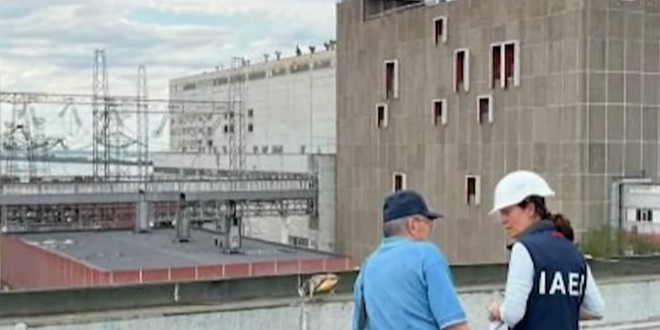In a press conference on Tuesday, the UN Secretary-General Antonio Guterres was asked about a statement by the Russian Defense Minister concerning the UN’s IAEA nuclear inspections team sent to inspect the Zaporizhzhia Nuclear Plant. The Russian minister claimed that a Ukrainian group of “saboteurs” attempted to seize the nuclear plant to use as the UN inspectors as a human shield against Russian attacks.
The Russian statement went on to express “bewilderment” at the lack of response from the UN Secretary-General.
Guterres thanked the Russian government for keeping the UN team safe.
We are glad that the Russian Federation was able to do what it needed to keep the inspectors safe,” Guterres responded. “Like with any UN mission, it is the responsibility of those who have power over a certain area and are responsible for a certain area to keep UN staff safe.”
Russia built the Zaporizhzhia Nuclear Power Station in southeastern Ukraine, and the first units went online between 1985 and 1989. It is the largest nuclear power plant in Europe and among the ten largest in the world.
In March, the nuclear and thermal power stations were both captured by Russian forces. The plant is reportedly controlled by the Russian military and continues to be operated by Ukrainian staff under Russian control. In July, it was attacked by Ukrainian suicide drones, killing three Russian soldiers but not damaging the plant.
In August, Rafael Grossi, head of the IAEA, expressed grave concerns about the physical integrity of the plant, whether all necessary repairs and maintenance were being done, and the security of nuclear material. A mission to inspect the plant was planned by the IAEA, waiting on approval from the Ukrainian and Russian sides. The Ukrainians refused, saying the visit would legitimize Russia’s presence there.
A few days later, the Ukrainians launched an attack using heavy artillery and cluster ammunition against the plant, causing three transformers to shut down and one of the three operating reactors to be disconnected from the grid, triggering its emergency protection system. The Ukrainians claimed that Russia had staged the attack.
Russia agreed to an AIEA inspection and to allow the inspectors to remain permanently at the nuclear plant. At the same time, Ukrainian president Zelenskyy criticized the IAEA for not yet calling for the demilitarisation of the plant. The IAEA team arrived at the plant on September 1.
Russia stated that on September 2, a Ukrainian force of over 250 marines attempted to land near the plant in darkness at about 11 pm that evening. Still, the landing was foiled by helicopters and fighter jets, destroying 20 vessels and scattering others.
On 5 September, the IAEA reported that more shells hit the plant.
The IAEA released a report warning of the gravity of the situation, calling to establish a “security protection zone” around the plant.
“The situation in Ukraine is unprecedented,” the report read. “It is the first time a military conflict has occurred amid the facilities of a large, established nuclear power.”
The shortcode is missing a valid Donation Form ID attribute.




